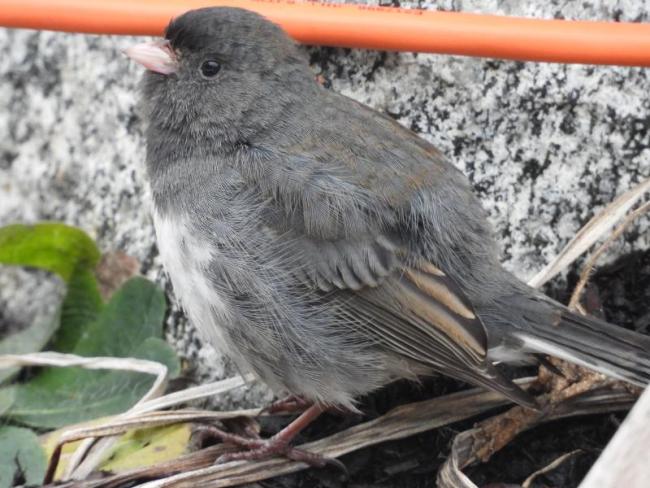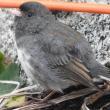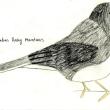Special Winter Birds: Dark-eyed Juncos
Spring is an exciting time for birders, because many birds from the south migrate to Maine to breed, and then leave again around September. This is a cycle that has happened for as long as we can remember, and is very predictable. However, juncos throw us in for a loop. In most of Maine, they leave in the summer to breed in Canada and return to Maine in the winter. This makes seeing juncos all the more exciting because they can only be seen for about five months during the off-season. The best place to see them is foraging on the ground under bushes, trees, and feeders.
Another thing that makes Dark-eyed Juncos unique is that there are four distinct subspecies in North America that can fairly easily be distinguished from one other. The first one, the Slate-colored Dark-eyed Junco, is widespread and can be found almost everywhere in the US and Canada. It typically breeds in Canada, and then winters all across the US. This is the subspecies that we can see here in Maine.
The second subspecies, the Canadian Rocky Mountains Dark-eyed Junco, is not found east of Idaho. The states that you can find it in include Idaho, Washington, and the Canadian province British Columbia. The male is fairly similar to the Slate-colored subspecies, but has a darker head.
The third subspecies is the Oregon Dark-eyed Junco. It is easily recognizable, with a sharply contrasting black head and tan, light grey, and pink body. It is found in every state west of Nebraska, as well as parts of British Columbia and Mexico. This subspecies, along with the Slate-colored, are the two most widely known types.
The fourth and last subspecies is the White-winged Dark-eyed Junco. This bird looks very different from the other subspecies, with only grey and white on the body. It also is about 12% bigger than the Slate-colored. It is extremely local, found only in small parts of Montana, South Dakota, Wyoming, Nebraska, Colorado, and Kansas.
Despite all of these differences, all juncos are happy, bubbly, little birds that are a joy to watch. They all also share a pink bill as well as pink legs. This is a great reminder in the form of nature that no matter how different two things look, they may not be all that different on the inside. This winter, get out and enjoy the juncos! As always, please stay safe, be kind, and act in the best interest of the birds.
 A Slate-colored Dark-eyed Junco sits underneath a birdbath, showing off its striking pink bill. Photo courtesy Eliza Nickelson.
A Slate-colored Dark-eyed Junco sits underneath a birdbath, showing off its striking pink bill. Photo courtesy Eliza Nickelson.
 A Slate-colored Dark-eyed Junco sings underneath a bird bath. Photo courtesy Eliza Nickelson.
A Slate-colored Dark-eyed Junco sings underneath a bird bath. Photo courtesy Eliza Nickelson.
 A Slate-colored Dark-eyed Junco forages on the ground. Photo courtesy Eliza Nickelson.
A Slate-colored Dark-eyed Junco forages on the ground. Photo courtesy Eliza Nickelson.
 A Slate-colored Dark-eyed Junco hops around while foraging. Photo courtesy Eliza Nickelson.
A Slate-colored Dark-eyed Junco hops around while foraging. Photo courtesy Eliza Nickelson.
 A female Canadian Rocky Mountains Dark-eyed Junco shown in a drawing. Drawing courtesy Eliza Nickelson.
A female Canadian Rocky Mountains Dark-eyed Junco shown in a drawing. Drawing courtesy Eliza Nickelson.
 A male Canadian Rocky Mountains Dark-eyed Junco. Drawing courtesy Eliza Nickelson.
A male Canadian Rocky Mountains Dark-eyed Junco. Drawing courtesy Eliza Nickelson.
 A male Oregon Dark-eyed Junco. The female looks very similar, but with a lighter head. Drawing courtesy Eliza Nickelson.
A male Oregon Dark-eyed Junco. The female looks very similar, but with a lighter head. Drawing courtesy Eliza Nickelson.
 A male Slate-colored Dark-eyed Junco. The female tends to be lighter overall. Drawing courtesy Eliza Nickelson.
A male Slate-colored Dark-eyed Junco. The female tends to be lighter overall. Drawing courtesy Eliza Nickelson.
 A male White-winged Dark-eyed Junco. Drawing courtesy Eliza Nickelson.
A male White-winged Dark-eyed Junco. Drawing courtesy Eliza Nickelson.
United States








































